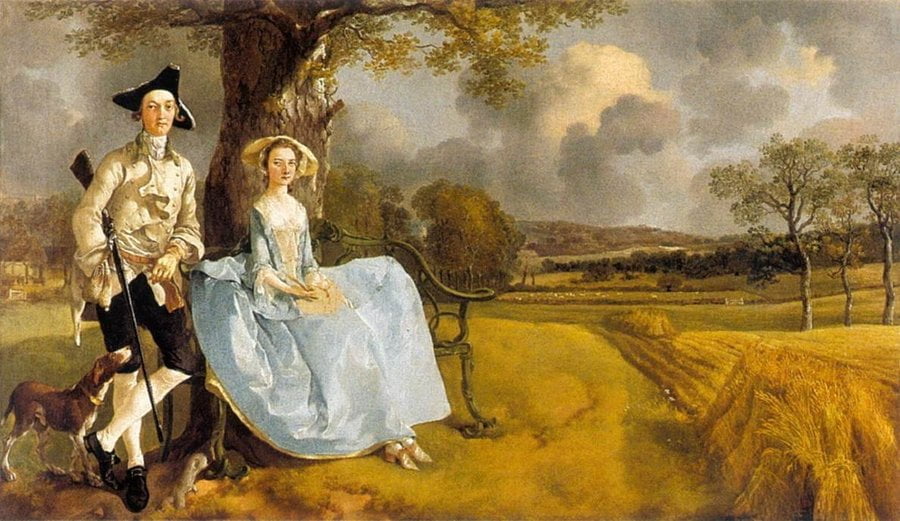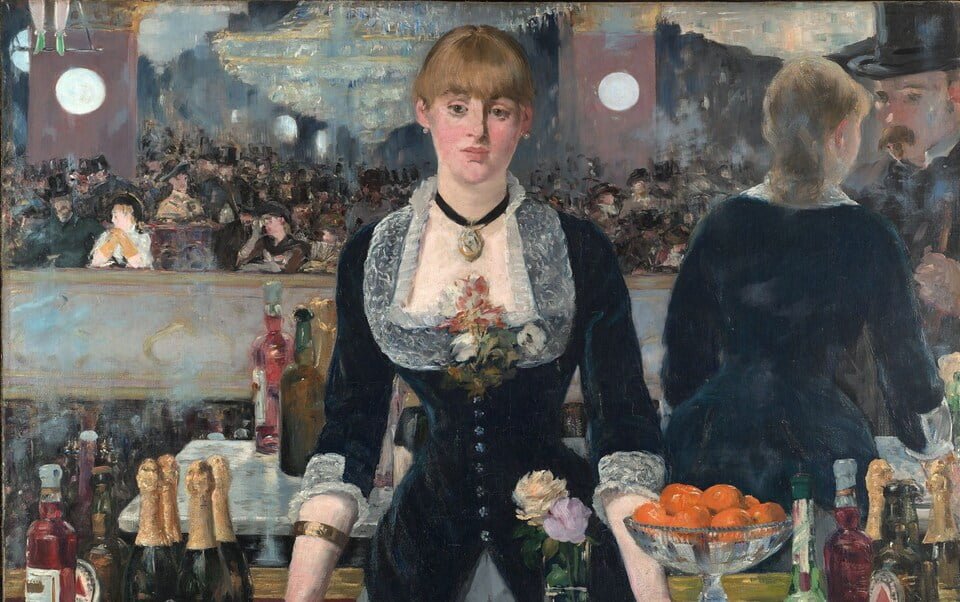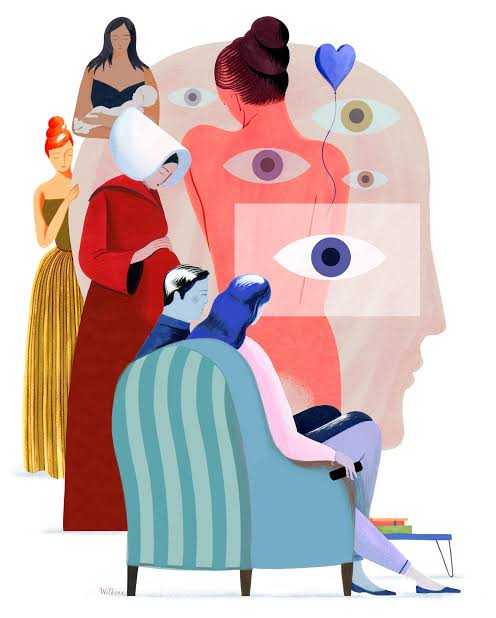John Berger’s book Ways of Seeing published in 1972 based on the BBC television program, is a very influential and captivating criticism of art. Through their work Berger talks about the ideas of capitalism, hegemonic masculinity, and how women are objectified in European oil paintings. Moreover, the main argument put up by Berger is that what we see is reflected is what we understand. In other words, what we see is influenced by what we know and believe (Berger, 1972).
However, in his book, Berger initially mentions Walter Benjamin’s seminal work The Work of Art in the Age of Mechanical Reproduction in which Berger effectively demonstrates the Marxist orientation of his work, particularly as he examines how the ruling class or elite class people imbue an artificial and untruthful aura to original work. They do so to retain their oppressive and morally repugnant financial situation and to renew and maintain the fetishisation of original works of art, which the expansion of photographic reproductions threatens. He argues that privileged minority manipulates art to preserve their interest. The demonstration of women in European oil painting and their objectification is one of the major concerns of Berger’s work.
Furthermore, Berger begins by attempting to explain the connection between words and what we see. He emphasises that seeing and being recognised come before words; we establish our place in the world by sight but explain it with language. Regardless, he claims that there is always a gap between what we see and what we know. After establishing that we see first and then use words to explain the world, he goes on to suggest that what we know or think influences how we view things.
We see what we look at and can thus relate to it. We also realise that we are visible and so a part of the visible world
This creates a dynamic interaction, it may begin with seeing and recognising but it evolves into a system in which our prior experiences or knowledge influences the way we view things. On that account, the act of perceiving is active, it is a deliberate act. We see what we look at and can thus relate to it. We also realise that we are visible and so a part of the visible world. This leads to the realisation that others may perceive things differently. The two-way nature of vision precedes discourse.
The ‘mystification’ of European oil paintings in Ways of Seeing by Berger
Throughout his book, Berger heavily used the term ‘mystification‘. The definition of mystification is ‘an obscuring, especially of capitalist or social dynamics that are seen in Marxist, thought as an impediment to critical consciousness‘. In Marxism, mystification refers to the deliberate deception of the majority working class (proletariat) by the minority upper class (bourgeoisie) to protect their wealth. Products are manufactured by workers but owned by the elite people, who can sell them for whatever price they like.
The elite (owner) earns the entire profit while the worker is paid a defined pay. The worker, the labour that goes into the manufacturing of these items, and the discrepancy between his wage and the profit that he creates for the owner are all unseen to the consumer- hidden and misunderstood. However, Berger extends this paradigm of mystification to the way art is analysed and owned, notably the claim that art historians and the affluent elite have disguised ideas contained within art throughout history. Though he does not use the phrase in a strictly Marxist sense, there are striking parallels between the two, suggesting that Berger’s Marxist convictions affected his perception.
Moreover, one of the most visible ways art is becoming confounded nowadays is by how it is represented and described in art theory and history. Artists and their works are most frequently depicted by museum docents and historians. According to Berger, it does not adequately reflect the norms of the European oil painting tradition. As a result, the history of the time is inaccessible to the general people and has control of the elite class. On the contrary, Berger also highlighted Marxist Feminist Theory in which he analysed the ways women are exploited through capitalism and the individual ownership of private property.
Male voyeurism and female spectatorship according to Berger
The ‘male gaze’ is represented by the term voyeurism. The term ‘male gaze’ symbolises how heterosexual men adore attractive women, whether from men’s magazines or their partners, to feel pleasure or lust towards them. Mulvey’s theory states that women are considered less valuable and inferior than men, as they are just perceived as sexual symbols with no personality. (Mulvey, 1975). To elaborate on Mulvey’s idea of male voyeurism, Berger discusses how a male eye perceives the female body, and how women are instinctively objectified and dehumanised, making them appear simply as an inanimate objects for men to enjoy for their benefit and passion.
The way a photograph is lit, how it is taken, and the angles at which the image is captured as well as how women are positioned, made up, and dressed, all impact the male gaze over women. In addition, photos and paintings, demonstrate that these were produced solely for men to enjoy. However, Berger believes that women are constantly thinking about the way they look and feel within themselves, as well as to others, particularly men. Women are continuously pressured to appear respectable to be liked to feel loved or to have self-worth and value:
‘Woman must continually watch herself. She is almost continually accompanied by her image of herself. From earliest childhood she has been thought and persuaded to survey herself continually‘ (Berger, 1972).
Men survey women before treating them. Consequently how a woman appears to a man can determine how she will be treated
Berger writes:
‘To be born a woman has been to be born, within an allotted and confined space, into the keeping of men. The social presence of women has developed as a result of their ingenuity in living under such tutelage within such a limited space…She has to survey everything she is and everything she does because how she appears to others, and ultimately how she appears to men, is of crucial importance for what is normally thought of as the success of her life. Her sense of being in her is supplanted by a sense of being appreciated as herself by another.‘
Men survey women before treating them. Consequently how a woman appears to a man can determine how she will be treated. To acquire some control over this process, women are forced to contain it and interiorise it Subconsciously, women are naturally conditioned to impress people, especially men, therefore they perpetually feel the urge to gaze in mirrors and view their reflection to see how they appear to others, to attain male acceptance. Berger argues that this mindset is not based on vanity, but women have been taught from a young age to always look presentable. However, Berger identifies that women are both ‘the surveyor and the surveyed’ where men are allowed to act, and women watch themselves being watched.
Nudity and objectification of women
Nude women in European oil paintings are the main subjects. Wealthy males used to acquire those paintings to demonstrate their authority. Berger claims that the objectification of women in paintings has made them objects because of the way male viewers gaze at them and those who are affluent and opulent buy those paintings to remind them that they are powerful, rich, and desirable.
Nude women were the main subject in European oil paintings. As oil paintings exhibit various objects to showcase wealth, women were considered the same as wealth to be flaunted. Berger calls them males ‘spectator owners‘ because the man who owns the oil painting also owns those nude women (in his mind). He considers himself the reason why nude women were on the paintings to display themselves for him, the spectator.
To conclude, John Berger tries to convey that there are different ways of seeing depending upon person to person. He describes how European oil painting glorified women’s nudity and objectification so that men could take pleasure in it. On the other side, the main argument of Ways of Seeing is how women are portrayed in European oil paintings and how they have been exploited to be depicted as nude.
However, another way to look at the portrayal of women in painting is not only to see them in terms of male pleasure sources but through the lens of empowerment through a feminist approach.
However, another way to look at the portrayal of women in painting is not only to see them in terms of male pleasure sources but through the lens of empowerment through a feminist approach. This lens considers women’s bodies as symbols of the appreciation that open the door for the liberation of women through representation in art, which is beyond the male gaze and unlawful desire. This, therefore, creates the space for women to be represented in all dignity.










